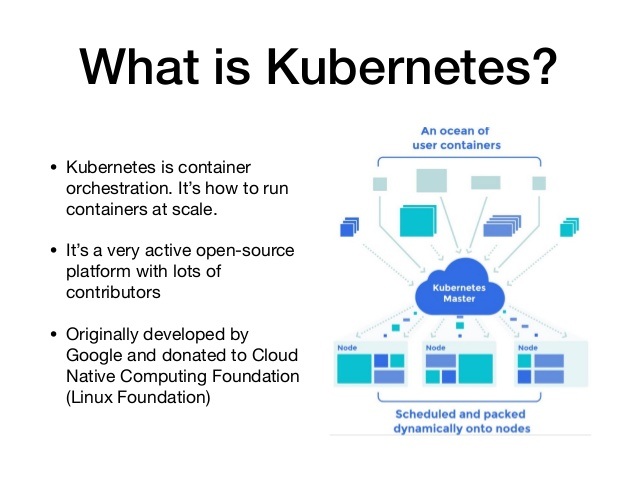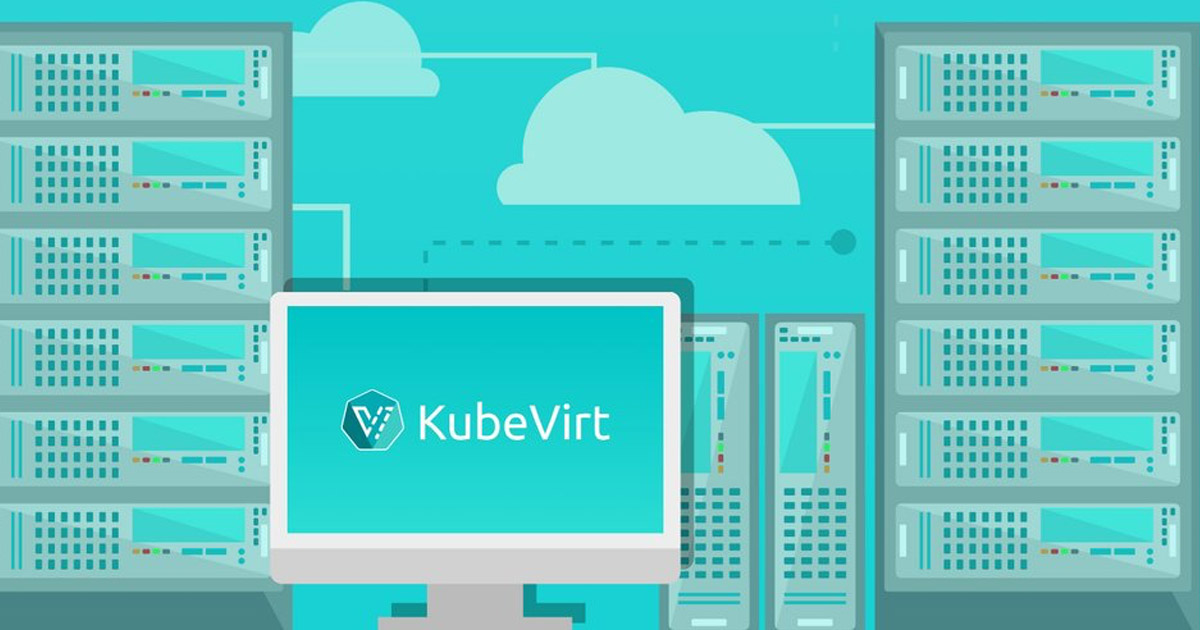Understanding Virtual Machines and Their Role in Kubernetes
Virtual machines (VMs) are a critical component of modern IT infrastructure, enabling the efficient use of physical resources and the deployment of various workloads. VMs provide an abstraction layer over the underlying hardware, allowing multiple operating systems and applications to run on a single physical server. This isolation and flexibility make VMs an ideal choice for many use cases, including development, testing, and production environments.
Kubernetes, a popular container orchestration platform, has also embraced the use of VMs. Kubernetes can manage and deploy VMs alongside containerized workloads, providing additional flexibility and resource management capabilities. By integrating VMs into Kubernetes, organizations can take advantage of the benefits of containerization while still supporting legacy applications or workloads that require a dedicated operating system.
Key Benefits of Using VMs with Kubernetes
Virtual machines (VMs) offer several advantages when used in conjunction with Kubernetes, making them an attractive option for many organizations. Here are some of the key benefits of using VMs with Kubernetes:
- Resource Isolation: VMs provide strong resource isolation, ensuring that workloads cannot interfere with each other. This is particularly important in multi-tenant environments where different teams or applications require dedicated resources.
- Workload Versatility: VMs support a wide range of workloads, including legacy applications, databases, and operating systems that may not be compatible with containerization. By integrating VMs into Kubernetes, organizations can take advantage of the benefits of containerization while still supporting these workloads.
- Operating System Compatibility: VMs allow for the deployment of multiple operating systems on a single physical server. This compatibility enables organizations to deploy and manage workloads with different operating system requirements, increasing the versatility of their infrastructure.
- Security: VMs provide an additional layer of security, as each VM runs in its isolated environment. This isolation can help prevent security breaches from spreading between workloads and reduce the attack surface of the overall infrastructure.
By leveraging these benefits, organizations can build more robust, flexible, and secure infrastructure using Kubernetes and VMs.
Top Kubernetes Virtual Machine Solutions
Several Kubernetes VM solutions are available, each with its unique features, benefits, and use cases. Here are some of the leading Kubernetes VM solutions:
Kubevirt
Kubevirt is an open-source Kubernetes virtualization solution that allows users to run VMs alongside containerized workloads. Kubevirt provides features such as live migration, snapshotting, and dynamic volume resizing, making it an attractive option for organizations looking to leverage the benefits of VMs in Kubernetes.
Virtual Kubelet
Virtual Kubelet is a Kubernetes kubelet implementation that allows users to run VMs as first-class citizens in Kubernetes. Virtual Kubelet enables organizations to use various VM platforms, such as AWS EC2, Azure VM, and OpenStack Nova, as Kubernetes nodes, increasing infrastructure flexibility.
OpenStack Kolla
OpenStack Kolla is an OpenStack project that provides containerized OpenStack services, including Nova, Neutron, and Cinder. Kolla enables organizations to deploy OpenStack services on Kubernetes, providing a unified infrastructure management platform for both VMs and containers.
These are just a few of the many Kubernetes VM solutions available. By evaluating their features, benefits, and use cases, organizations can choose the solution that best fits their infrastructure and workload requirements.
How to Deploy Virtual Machines in Kubernetes
Deploying virtual machines (VMs) in Kubernetes can be done using various solutions, such as kubevirt, Virtual Kubelet, or OpenStack Kolla. Here, we’ll demonstrate how to deploy a VM using kubevirt, a popular open-source Kubernetes virtualization solution.
Step 1: Install kubevirt
To deploy VMs using kubevirt, you first need to install it on your Kubernetes cluster. You can install kubevirt using the kubevirt operator, which automates the deployment and management of kubevirt components.
Step 2: Create a VM
Once kubevirt is installed, you can create a VM using a Kubernetes manifest file. Here’s an example manifest file that creates a simple VM with a single vCPU, 1 GB of RAM, and a 10 GB disk:
<VM> <spec> <template> <spec> <domain> <name>my-vm</name> <vcpu>1</vcpu> <memory unit='Gi'>1</memory> <os> <type arch='x86_64' machine='pc-i440fx-bare'/> <boot dev='hd'/> </os> <features> <acpi/> <apic> <chosen>emulated</chosen> </apic> </features> <clock offset='localtime'> <timer name='pit' present='yes'/> <timer name='hpet' present='yes'/> <timer name='rtc' present='yes'/> </clock> <on_poweroff>destroy</on_poweroff> <on_reboot>restart</on_reboot> <on_crash>destroy</on_crash> <devices> <emulator>qemu-kvm</emulator> <disk type='file' device='disk'> <driver name='qemu' type='qcow2'/> <source> <file path='/path/to/vm-disk.qcow2'/> </source> <target dev='vda' bus='virtio'/> </disk> <interface type='bridge'> <source bridge='kubevirt-bridge'/> <model type='virtio'/> </interface> <serial type='file'> <source path='/path/to/vm-serial.log'/> <target port='0'/> </serial> <console type='file'> <source path='/path/to/vm-console.log'/> <target type='serial' port='0'/> </console> </devices> </domain> </spec> </template> </spec> </VM> Step 3: Deploy the VM
Once you’ve created the manifest file, you can deploy the VM using the kubectl command:
kubectl apply -f vm-manifest.yaml Kubernetes and kubevirt will then create and start the VM based on the manifest file.
By following these steps, you can deploy VMs in Kubernetes using kubevirt, providing resource isolation, workload versatility, and compatibility with various operating systems.
Best Practices for Managing Virtual Machines in Kubernetes
Managing virtual machines (VMs) in Kubernetes requires careful planning and execution. Here are some best practices to ensure efficient and secure management of VMs in Kubernetes:
Monitoring
Monitoring VMs in Kubernetes is essential to ensure they are running smoothly and efficiently. Kubernetes provides various monitoring tools, such as Prometheus and Grafana, that can be used to monitor VMs and other Kubernetes resources. Regularly monitoring VMs can help identify and resolve issues before they become critical.
Scaling
Scaling VMs in Kubernetes can be done manually or automatically. Manual scaling involves adjusting the number of VMs based on workload demand, while automatic scaling uses Kubernetes’ built-in autoscaling features to adjust the number of VMs based on predefined metrics. Scaling VMs can help ensure that workloads are running efficiently and that resources are being used optimally.
Securing VMs
Securing VMs in Kubernetes is essential to prevent unauthorized access and data breaches. Kubernetes provides various security features, such as network policies, role-based access control (RBAC), and secrets management, that can be used to secure VMs. Regularly updating and patching VMs is also essential to ensure that they are protected against known vulnerabilities.
Regular Maintenance and Updates
Regularly maintaining and updating VMs in Kubernetes is essential to ensure that they are running efficiently and securely. Kubernetes provides various tools, such as kubectl and kubeadm, that can be used to update and maintain VMs. Regular maintenance and updates can help prevent issues, improve performance, and ensure that VMs are protected against known vulnerabilities.
By following these best practices, organizations can ensure that their VMs in Kubernetes are managed efficiently, securely, and optimally. Regular monitoring, scaling, securing, and maintaining VMs can help prevent issues, improve performance, and ensure that workloads are running smoothly and efficiently.
Challenges and Limitations of Using Virtual Machines in Kubernetes
While virtual machines (VMs) in Kubernetes offer several benefits, they also come with potential challenges and limitations. Here are some of the most common challenges and limitations of using VMs in Kubernetes:
Resource Overhead
VMs in Kubernetes can consume more resources than containers, leading to higher overhead and lower efficiency. This resource overhead can result in higher costs and lower performance, particularly in resource-constrained environments.
Complexity
Managing VMs in Kubernetes can be more complex than managing containers. VMs require additional configuration and management, such as setting up virtual networks and storage, which can increase the complexity of the system.
Performance Trade-offs
VMs in Kubernetes can have performance trade-offs compared to containers. VMs can have higher latency and lower throughput than containers due to the additional layer of virtualization. This performance trade-off can be significant in high-performance workloads, such as real-time data processing and machine learning.
Potential Solutions and Workarounds
Despite these challenges and limitations, there are potential solutions and workarounds to using VMs in Kubernetes. For example, using lightweight VMs, such as Firecracker, can help reduce the resource overhead and improve performance. Additionally, using Kubernetes’ built-in features, such as namespaces and resource quotas, can help manage complexity and ensure efficient resource utilization.
By understanding these challenges and limitations, organizations can make informed decisions about using VMs in Kubernetes and implement potential solutions and workarounds to ensure efficient and effective management of their workloads.
Future Trends and Developments in Kubernetes Virtual Machines
Virtual machines (VMs) in Kubernetes are an evolving technology, with several future trends and developments on the horizon. Here are some of the most exciting trends and developments in Kubernetes VMs:
Improved Integration with Container Runtimes
One of the most significant trends in Kubernetes VMs is improved integration with container runtimes. As containers and VMs become more integrated, Kubernetes will be able to manage both containerized workloads and VMs more efficiently, providing greater flexibility and efficiency in managing workloads.
Better Resource Utilization
Another trend in Kubernetes VMs is better resource utilization. As VMs become more lightweight and efficient, Kubernetes will be able to allocate resources more effectively, reducing overhead and improving performance. This trend will be particularly important in resource-constrained environments, such as edge computing and IoT devices.
Enhanced Security Features
Security is a critical concern in Kubernetes VMs, and several developments are underway to enhance security features. For example, new encryption and authentication mechanisms are being developed to secure VMs and containerized workloads, providing greater protection against cyber threats.
Emerging Use Cases
Finally, Kubernetes VMs are being used in several emerging use cases, such as virtual desktop infrastructure (VDI), machine learning, and data analytics. As these use cases become more prevalent, Kubernetes VMs will become an essential technology for managing complex workloads in these environments.
By staying up-to-date with these future trends and developments in Kubernetes VMs, organizations can ensure that they are using the latest technology to manage their workloads efficiently, securely, and effectively.






